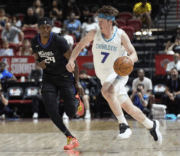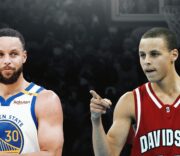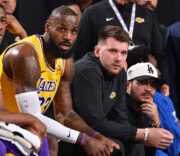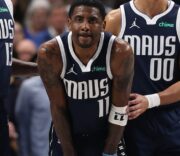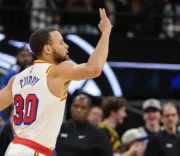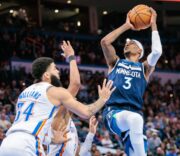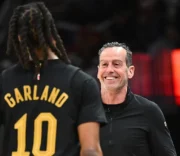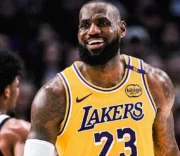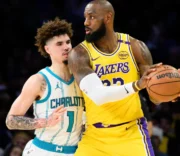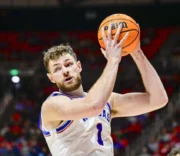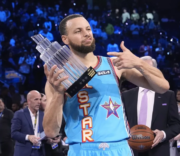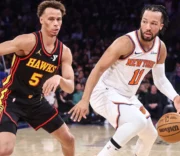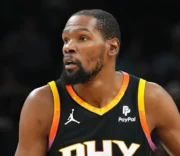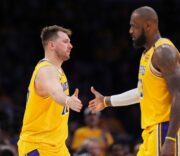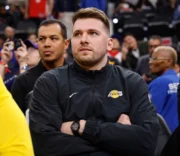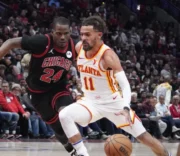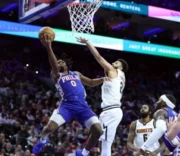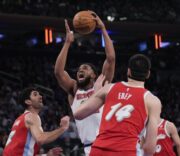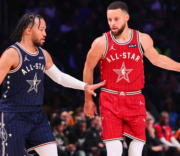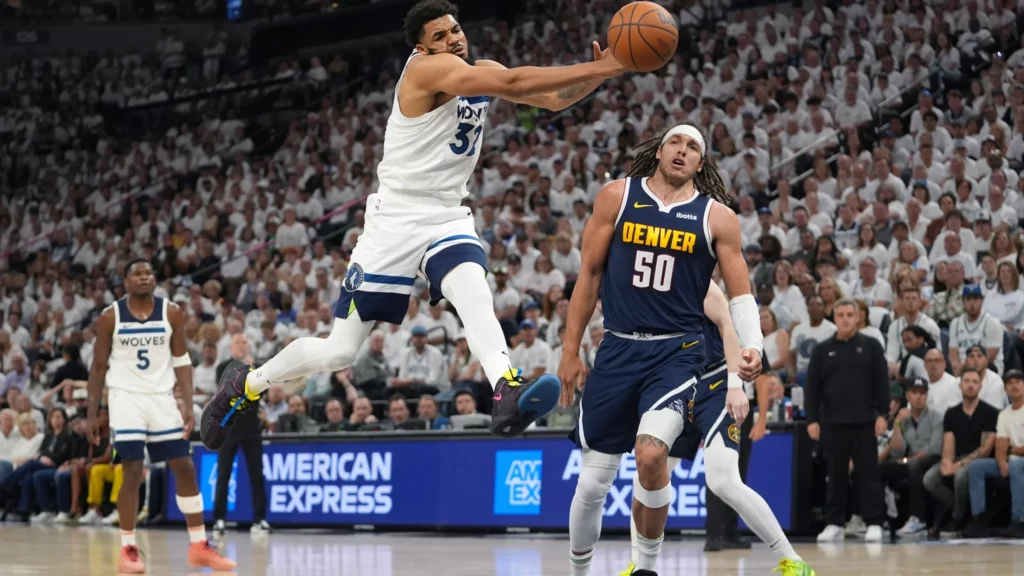
Momentum in the NBA playoffs may not always carry over from one game to the next. The apparent momentum a team gains during a series is typically a mix of various factors rather than mere chance. As adjustments are made, player matchups settled, and strategic advantages uncovered, the dynamics of the game often change. Occasionally, one team excels in three-point shooting (shoutout to Aaron Gordon!) while the other struggles to find their rhythm.
This is precisely what’s unfolding in the second-round battle between the Denver Nuggets and Minnesota Timberwolves, two top-tier contenders vying for the championship. Currently deadlocked at 2-2, both teams showcase their superstars performing at peak levels, contributing to an intense and unpredictable series. As the competition deepens, each team is discovering effective strategies and acknowledging the challenges in countering their opponent’s strongest plays. The outcome of this exhilarating contest remains anyone’s guess.
Nuggets’ Resilience Shines in Series Comeback
Despite two consecutive home losses to start the series, leaving many to count them out, the Denver Nuggets demonstrated remarkable resilience, turning the tide against the Minnesota Timberwolves on enemy turf. The resurgence was spearheaded by Nikola Jokic and Jamal Murray, who reignited their dynamic partnership, finding their rhythm in pivotal court positions. However, the success of the Nuggets extends beyond the star duo, echoing sentiments from last year’s championship run. “We’re more than just Nikola Jokic,” stated Coach Michael Malone after clinching a 115-107 victory on Sunday, highlighting the depth and confidence permeating the squad.
While the Nuggets have adapted to unlock their offensive capabilities, the Timberwolves remain formidable opponents, thanks largely to Anthony Edwards. The rising superstar delivered a staggering 44-point performance in Game 4, tearing through Denver’s defenses despite strategic adjustments. Edwards’ explosive presence kept Minnesota’s offensive threat alive, particularly in the fourth quarter, where they posted an impressive 127.3 offensive rating with him on the floor. The series continues to hang in the balance, with the Nuggets searching for solutions to contain Edwards’ impact.
Competing at the Top: Edwards Discusses Game Momentum
“I don’t believe they gained any momentum,” Edwards commented after Sunday’s game. “We each won two games, so now it’s about who wins the next two. I’m not sure how others see it, but I’m feeling positive. We’re competing at the highest level, and that makes me smile. I’m excited and ready for the next game. I’d be ready if we played tomorrow.”
Since Game 2, the Nuggets have consistently positioned multiple defenders in Edwards’ path whenever he has the ball, hindering his direct access to the basket. While this strategy occasionally proves effective, it often proves futile against Edwards’ unstoppable perimeter shots and relentless movement. In Game 4, Edwards’ speed allowed him to outmaneuver Denver’s defenses, particularly slipping past Jokic who positioned too high during a ball screen defense.
Edwards’ Resilient Performance in Game 4
Edwards was unstoppable on his straight-line drives, piercing through layers of defense and effortlessly finishing with dunks and acrobatic reverse layups. Contrasting his approach in Game 3, where he often passed the ball when faced with tight coverages, Edwards adopted a more direct strategy in Game 4. After navigating around a pick and encountering a defender, he decisively attacked the basket. “I was just aggressive tonight,” Edwards remarked. “In Game 3, I only took like 14 shots, which is not myself.”
Coach Malone sees no need for drastic changes in handling Edwards. While he might consider doubling up on Edwards before a screen if the situation worsens, the current strategy remains sound. The Nuggets hope to quicken their pace in Game 5, relying on Edwards’ teammates to miss shots when he passes the ball. The game margins are narrow, yet Edwards’ indomitable spirit uplifts his team, convincing them that no deficit is too great to overcome as long as he is playing. During his 45 minutes on the court in Game 4, the Timberwolves were up by five points; however, in the mere three minutes he rested, they dropped by thirteen points.
The Timberwolves’ efficiency isn’t solely dependent on Edwards. When teammates like Mike Conley and Jaden McDaniels match his intensity and exploit opportunities, such as driving through Denver’s stretched defenses, the team excels.
Analysis of Denver’s Offensive Strategy and Minnesota’s Defensive Response
Conley and Rudy Gobert successfully executed some empty corner pick-and-rolls, notably adjusting one play to include Edwards as an additional screener. Despite Conley initially rejecting the screen, he managed to drive along the baseline and connect with Gobert via a lob pass.
Edwards reflected on the game’s outcome, stating, “I think we gave ourselves plenty of chances to win that game tonight. We just made a few mistakes. I mean, they got the best player in the world, and he’s got the ball the entire game. So anytime you make a mistake, he sees it. It’s hard to beat that.”
The Nuggets have a unique capability to capitalize on errors, particularly when their team synergy is fully engaged. Their championship-level chemistry brings together two generational talents in a manner rarely seen in the NBA. In the initial games of the series, Jokic and Murray struggled to synchronize effectively on the court, thwarted by a defensive strategy that limited Jokic’s opportunities from the short roll.
However, by Game 4, Murray and Jokic had recaptured their rhythm, reminiscent of Old Faithful. Their reliable, precise shooting from the perimeter loosened Minnesota’s tight defense on the weakside in the fourth quarter. Notably, Edwards chose to stay close to Michael Porter Jr. rather than rotating fully into the paint to intercept a potential pocket pass, a move that Karl-Anthony Towns was slightly too slow to counter.
Unraveling Denver’s Strategic Play: The Key to Dominance
Coach Malone highlighted the formidable defensive challenge posed by the opposition, noting their ability to consistently pressure Jamal. He emphasized Jamal’s pivotal role in efficiently connecting with Nikola in the pocket, which he likened to solving a Rubik’s Cube. Once Nikola receives the ball, he becomes a dynamic threat, capable of executing a lob, a kick-out for a three-pointer, or delivering one of the most effective floaters in the league. This tactic is a cornerstone of their strategy.
In action, they often initiate this play with a dribble handoff, where Gordon’s screening creates just enough space for Murray to draw the defender away from Jokic, allowing for a critical pass. This tried-and-true strategy is expected to be a significant advantage for the Nuggets, enabling them to maintain pressure through either quick handoffs or higher-set screens, ultimately disrupting Minnesota’s defense and creating opportunities for open three-point shots.
The Resilience of the Denver Nuggets
It’s exceptionally challenging to defeat the Denver Nuggets four times in a row. During Nikola Jokic’s prime years, it might even be unfeasible. The Nuggets consistently create numerous challenges for their opponents while effectively addressing any difficulties they face, ultimately leading to success. This team’s core is resilience, bolstered by exceptional shot-making abilities and a level of selflessness that permeates all aspects of their gameplay.
Coach Malone highlighted the team’s spirit, saying, “What I’ve observed about our group is their belief in themselves and, more crucially, in their teammates. Our team behaves in the way you’d expect from championship contenders. They recognized and owned up to a bad game, moved beyond it, and improved. Rudy Tomjanovich was right—never underestimate the heart of a champion.”


